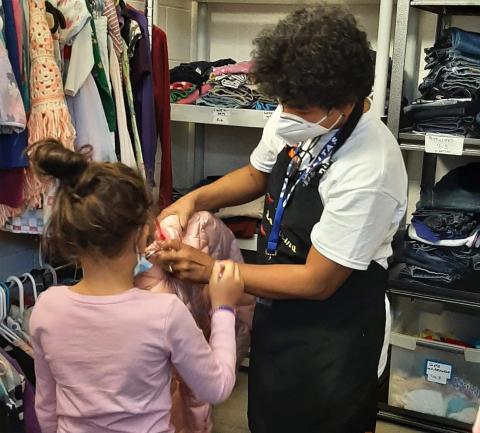
Mission on the Margins
What strikes me most about the readings for this Sunday’s liturgy — the gospel from Matthew in particular — is the way mission is to be carried out following the example of Jesus. He begins his OUTREACH to the people on the margins, the people in Capernaum. These people seem to be on the outskirts of Jewish (mainstream) society and bear a history of marginalization.
The region of Zebulun and Naphtali was part of the Northern Kingdom which was the first to fall to the invading Assyrians, and therefore the first to be forced into exile for 70-some years. These people were a mixture of Jews and non-Jews (that is, Gentiles). They were not considered pure Jews and therefore were, to borrow a modern term, “second-class citizens.” Nonetheless, in the gospel of Matthew, it was to these people that the Good News was to be preached first, the good news in the person of Jesus Himself, the bearer of light, or to be more precise, THE light Himself that Isaiah prophesied about. This already tells us that Jesus’ first ministry was to the marginalized.
Jesus, in fact, was always expanding his disciples’ world. He does not tell his disciples to hunker down and settle in the land, a stance that would go along with regionalism. Instead, he would send them forth with a mission: “Go now and make disciples of all nations…” (Matthew 28:19-20).
Making disciples (i.e., “discipling”) meant going beyond borders. In fact, making disciples is building communities founded on just relationships. This is what building the kingdom of God means.
There are three things we should remember from this:
- Jesus’ mission is characterized by mercy and compassion, not judgment.
- Jesus’ mission is inclusive, not exclusive; and, it is expansive.
- Jesus’ mission begins and ends with the least ones, the poor; in other words, the marginalized. The Church would anchor its social teaching on this principle: OPTION FOR THE POOR.
This brings us to this question: WHO WILL CARRY OUT JESUS’ MISSION INTO OUR TIME? If we follow Jesus’ example, where would we begin? His was a mission to the vulnerable and marginalized, A MISSION ON THE MARGINS.
We, Maryknoll Sisters, at our General Assembly in September of 2021 said: “Looking at the signs of the times, commit ourselves to address climate change, migration, and all forms of discrimination as a priority focus for ministry.”
Likewise, Pope Francis has spoken about the world-wide phenomenon of migration and the role that the churches, religious, and faith communities play in this ongoing crisis in our world. He said at the 104th World Day of Migrants and Refugees, 2018:
“Every stranger who knocks at our door is an opportunity for an encounter with Jesus Christ, who identifies with the welcomed and rejected strangers of every age. A change of attitude towards migrants and refugees is needed on everyone's part. Let's move away from a fearful and defensive attitude, from indifference and marginalization, towards a healthy attitude based on the culture of encounter.”
Consistent with Jesus’s mission on the margins, our community has joined others in responding to the call for volunteers to serve at the US-Mexico border. I was part of a team of Maryknoll Sisters who worked at Casa Alitas Welcome Center, in Tucson, AZ. There at the border, we welcomed tired, hungry, and weary travelers of different nationalities, all seeking refuge in the United States.
During one of my runs to the airport, I accompanied a Mexican mother and her boy of three to the gate to wait for boarding. They were cleared to travel to a relative who is sponsoring them. While they waited, another flight arrived. One of these new arrivals was a little white American boy also of the same age as the Mexican boy. He was accompanied by his mother. On seeing the boy at the waiting area, without rhyme or reason, the newly arrived boy ran to the young Mexican and threw his arms around him. This was reciprocated by the Mexican boy. Everyone was stunned. A totally unexpected thing was happening before our eyes: a gesture of hospitality and acceptance, with no questions asked, no conditions made, so innocently and sincerely extended and received. No words needed to be exchanged. No paper documents produced and stamped. The embrace that happened without hesitation said it all. For children, there are no borders, no margins. The whole world is a playground where all are welcome.
Being at Casa Alitas Welcome Center with other volunteers has been a source of inspiration and strength for me. These volunteers come from all walks of life, from different faith traditions including Jewish, Muslims and Christians. There is a sense of cooperation and collaboration among us that naturally evolves when our common goal is the same: to respond as best we can to the basic human rights and needs of every individual coming our way. What, I wonder, draws them to this place? What gives them energy to be with the migrants who come in droves? What keeps them going when the going gets rough? We are drawn together for one purpose: to extend mercy and compassion. Regardless of faith tradition or ideology, we share in Jesus’ conviction of service that must begin and end with the least ones, those on the margins: “For whatever you do to the least of these, you do to me” (Matthew 25:45).
In the end, I believe, we are motivated by a deep sense of fulfillment and gratitude when we respond to God’s call to be with others. Our foundress, Mother Mary Joseph as we fondly call her, said: “The missioner’s portion is a special consciousness of God’s thirst and hunger for the love of all. It was to satisfy this love that we came here.”
Photo of Sr. Genie Natividad assisting a migrant child in the clothing room at Casa Alitas Welcome Center.
